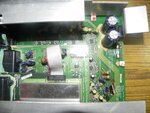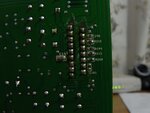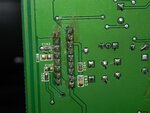shashankbr
Junior Member level 1
I have a step down transformer with the following ratings.
Input AC: 230 V / 50 Hz
Output AC: 18.5 V at 5.4 A
It had gone bad a few days back & I got it rewound from a local electrician.
Now when I check the output voltage which comes to 19 V (which I think is acceptable) but I am not sure how much current it is giving.
Because when I connected the transformer to a rectifier IC, the output pins of the IC got short.
And the device is not working.
Can you please tell me how can I measure the output current of transformer?
Input AC: 230 V / 50 Hz
Output AC: 18.5 V at 5.4 A
It had gone bad a few days back & I got it rewound from a local electrician.
Now when I check the output voltage which comes to 19 V (which I think is acceptable) but I am not sure how much current it is giving.
Because when I connected the transformer to a rectifier IC, the output pins of the IC got short.
And the device is not working.
Can you please tell me how can I measure the output current of transformer?


